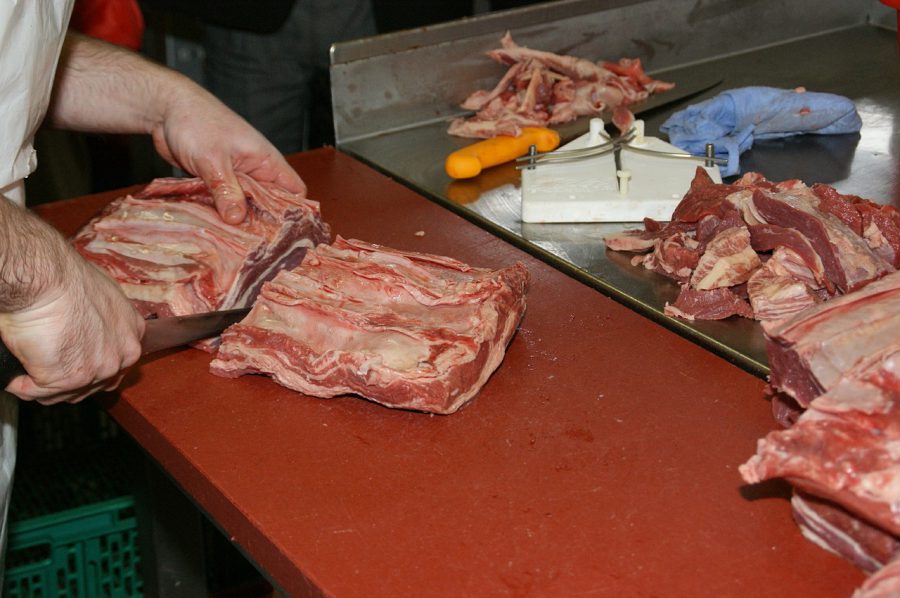You work long hours wielding your butcher knife. From preparing animals to be broken down into individual halves or quarters to cutting and packaging specific cuts and portions for the market, both butchers and meat cutters have a unique relationship with their knives—and an equally unique need for the best.
Meat professionals work fast, and this often results in injuries from accidents, Repetitive Strain Injuries (RSI) or Occupational Overuse Syndrome (OOS). These conditions can result in things like muscle overload, tennis elbow, tendonitis, arthritis (from gripping) and Carpal Tunnel Syndrome. The injuries are often characterized by discomfort or ongoing pain in the muscles, tendons and soft tissues of the back, neck, shoulder, wrists hands or fingers.
Many of these injuries are preventable, occurring because of poor knife safety practices, improper warm ups before work, using blunt knives requiring extra force, violent or sudden movements or using poorly designed knives (with equally poorly designed handles).
After analyzing the needs of s specific, high-volume meat company in New Zealand, our knife experts found a solution. Designing a knife built for the task.
The blade
Blades come in a variety of steel hardness and flexibility. And contrary to what you might think, the hardest steel isn’t always the best for the job. For meat cutting in particular, butchers need a strong blade (with long-lasting, sharp edges) and enough flexibility to move quickly. Many companies stick to ordinary 420 or 440 steel. But to get the job done in the best way, butcher knives should be made with AUS 8 HRC-56 steel. While typically more expensive, it not only does the job best, but improves safety and efficiency. Sharpness is crucial, but other small details help improve functionality and decrease injury, such as including running points on a knife to make entry and cutting easier.
The handle
A butcher knife handle is equally as important as the right blade. Using an anti-bacterial (FDA-approved) material can help minimize the risk of spreading raw meat contaminants. The tang handle should be twice as long as a normal butcher knife’s handle, and have a thumb rest that allows your hand to grip the handle naturally. A 90-degree thumb rest allows steady flipping, rotating and side cutting (and prevents tendon stress and the conditions associated with it). The knife handle’s body should be designed for easy rotation and gripping to reduce the risk of hand cramping, or moving the hand in unnatural ways. The heel is also a vital part of the knife, and should be designed for vertical stability.
The horizontal and vertical design
A good butcher knife will have both horizontal and vertical design aspects that improve its functionality. The handle should have a horizontal design that allows for easy, 360-degree in-hand rotation. This reduces discomfort and eases up on typical pressure points when using the knife at a variety of angles. It should also have a vertical thumb rest to keep the knife steady, a wide enough vertical body to enable users to have a natural, easy grip (and reduce cramps) and a vertical heel to increase stability of the whole unit.
For butchers and meat cutters, the right knife is everything. And while everyone has specific criteria they look for in a knife, there’s one thing that is indisputable: the need for utmost quality.


